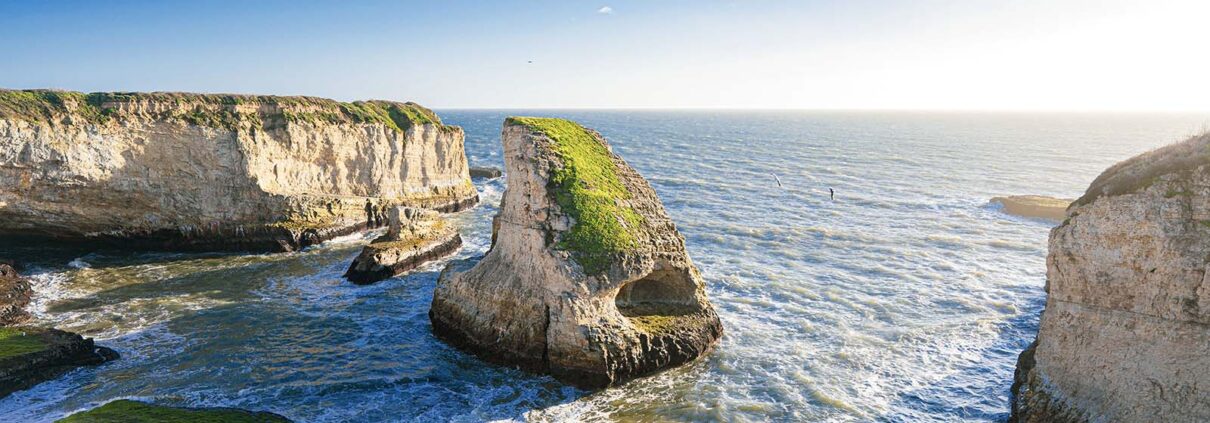Written by Anna Guth, reviewed by Heidi Waite.
Last fall, I found myself in a glass conference room overlooking the San Francisco Bay with a group of ambitious thought leaders. Feet from the blue-green water, the threat of sea level rise felt especially tangible. As OST’s first California Coastal Climate Resilience Science-Policy Communication Fellow, I was there to learn from the leading experts in climate science and adaptation.
OST partnered with the UC Santa Cruz Center for Coastal Climate Resilience (CCCR) and several other groups to host this packed October day of speakers and focused discussions. The groundbreaking event in Sausalito, The Economic Risks for Climate Change for California Communities, zeroed in on the financial risks that governments face from climate change and a variety of risk management strategies.
Together, OST and CCCR also jointly supported me through this unique fellowship to pursue my M.S. in science communication from UC Santa Cruz. OST and CCCR share the goal of providing evidence-based information to decision makers on strategies for building climate change resilience. With editorial freedom as a fellow, I wrote independent news stories that shed light on insurance and other coastal resiliency measures.
Over the past year as a fellow and master’s student, I had the incredible opportunity to take courses at UC Santa Cruz in science news, investigative, data, video and audio journalism. I published all of my schoolwork — around 30 science and science policy articles — in regional, national and international outlets. In addition, I interned with the science desk of KQED, the NPR and PBS member station for Northern California.
After gaining inspiration at the Sausalito event, I wrote three articles about insurance innovation. I published a story in January for the Monterey Herald about the launch of a new parametric flood insurance product for California municipalities. I explored the program as a potential fit for Monterey County, where floods in Pajaro have drawn national attention. I published a second story for KQED about California’s first community parametric flood insurance program in the small city of Isleton. My third story, a profile of an esteemed insurance leader, is slated to come out this summer — along with several additional stories featuring the work of CCCR.
When I started the UC Santa Cruz master’s program, I had some professional experience in journalism and communications with a focus on the climate crisis. After I earned my bachelor’s degree in English and environmental studies from Wesleyan University, I covered the science beat for a weekly newspaper in Northern California, the Point Reyes Light, and later managed communications for a community foundation, West Marin Fund. I was inspired to pursue my master’s degree to take my career in science communication to the next level.
Now, a month after my graduation, I am thrilled to take my next professional steps. This summer, I am writing about science for the communications office at Stanford University. In September, I will start as the new climate and science reporter for SFGATE through UC Berkeley Journalism’s two-year California Local News Fellowship.
My gratitude for OST’s investment in me as a science communicator through this fellowship is too immense for words. Thank you especially to OST’s Science Officer Heidi Waite for bringing me into the fold and for our regular conversations over the course of the past year. I know my perspective on climate change will forever reflect what I learned about the essential work of OST and CCCR.




